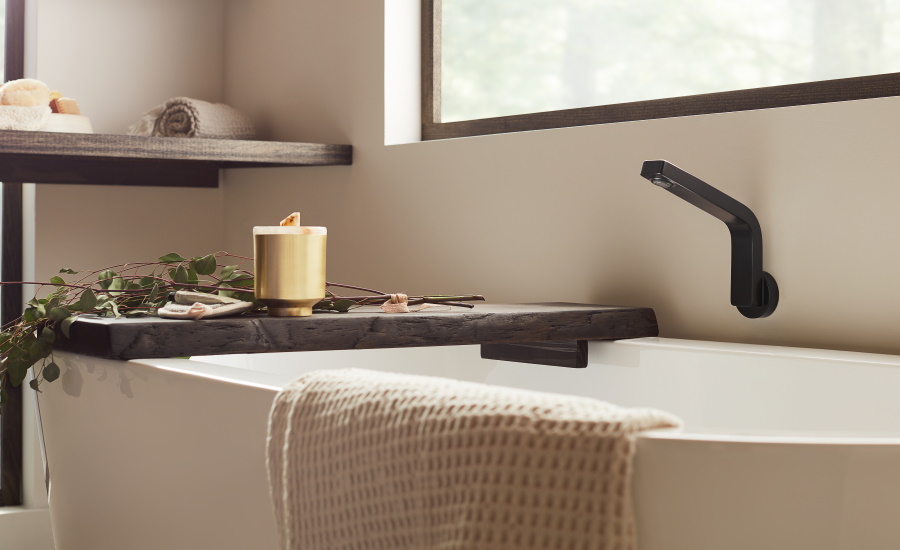It is imperative that our sales teams adopt the mindset of an entrepreneur and develop an ownership mentality; great salespeople already operate as if they are little businesses under the showroom’s roof. This mindset requires that we begin thinking about our skill sets and the impact we have on the overall performance of the showroom, not just reacting to a transactional sale that may be in front of us. While it would be effortless to write about some techniques that would sharpen skills, it will take more than a few simple tips to be a sales leader — and it will mean mastering new and different skills to win.
A Devotion to (Self) Promotion
In the analog days of showroom sales, marketing and promotions were an activity left to the enterprise. Owners and managers – sometimes with the help of an agency – would plan out their marketing approach for a given timeframe.
Once the plan was complete, the better showrooms would lay the completed program out before the sales team. Hence, they knew what was being promoted to the public, and only at this point, congruent sales dialogues could be fashioned.
To build trust and demonstrate their authority today, the sales team must be included from the beginning in both the planning and execution of marketing strategies — and those activities start online. To maximize the effectiveness of any showroom marketing campaign, the individual salesperson must be a promoter of their products, their company, and themselves.
In the analog days, we left business cards everywhere in hopes to drum up some business. Today, we must play an active part on several social media platforms and within groups. In 2020, we must engage clients and promote conversation on social platforms.
When the sales and marketing teams of a showroom align, the business can achieve overall growth rates and profit increases up to 25 percent. Today everything about the sales process starts online, when the silos of sales and marketing combine forces for the benefit and education of the consumer, sales team performance, and showroom revenues increase. It is that simple.
Order-Getters, Not Order-Takers
In order to meet the selling demands of today, we must modify many old sales skills that will be beneficial in 2020. Often new and different skill sets must be mobilized, other than those that are associated with typical showroom sales.
Showrooms must use all the technology and digital tools available to attract, engage, and convert shoppers into showroom traffic and then buyers. We can’t passively wait for the client to spur us into action. We must be proactive, even assertive.
Who is proven to be better at interacting with customers during any part of their buyer’s journey? None other than the people in the sales department. The role of a salesperson is still the same; they engage potential clients to transfer emotions about the showroom, the products they carry, and to provide useful information for a buying decision to be made. This goal is the same as it always has been; the only change is the timing and location of when the transfer of emotion begins. Yet some showrooms follow an unclear process or worse, and they are poor at creating the feeling needed for the client to take the next step. The flames of digital buying passion will not be fanned with a “see me/buy me only” marketing message. It will just get lost in the noise of the scroll.
When ineffective messaging is spread to potential customers by various delivery methods that don’t involve the sales team, it frequently is ignored. This is the time in the buyer’s journey to be engaging clients with a repeatable process, encouraging them to make the first physical showroom visit.
Walking into a showroom is a genuine buying signal. Showrooms are discovering that the timing for initial client/sales engagement is happening way too late in the journey. The cause is not letting go of the old analog marketing and sales process. When this process is forced upon the savvy digital client, it reduces showroom traffic and revenue.
If you don’t think this is happening in your showroom, look at your traffic counts — specifically the client’s first visit footfall. It has dropped. If you, as a professional salesperson, or your showroom, do not measure door traffic with a defined process, a key metric is missing.
A Failure to Communicate
Using digital communication properly by a sales team demands that they interact with a more significant potential client base before they have a product need. In other words, you’re speaking to the lurkers on social platforms, too.
A digital interaction can begin by providing answers to questions most asked by customers. Those questions are usually relative to a problem or situation they are facing.
The supporting evidence – which comes from Google – is that as many as 87 percent of consumers begin their research with a generic search term, and those queries typically fall into one or more of five specific topics no matter if the market you’re after is B2B or B2C.
These five points are the hot buttons across all client personas and should be a part of every digital marketing strategy and professional sales conversation. In order of client query, the topics most asked about are:
Pricing
Product
Showroom Reviews
Client problems they want to have solved
This vs. that product or vendor comparisons and details on the best product in the class
Having an astute sales team that can socially engage on these topics and point to the digital support documents in the form of your internal blogs goes a long way to motivating the digital browser to turn into a showroom visitor.
Connecting With a
Digital Prospect
Since we know almost everyone is researching online before they make a purchase, especially a luxury purchase like lighting or plumbing, the question becomes: How does a salesperson locate potential clients and then build a relationship? Clients want the convenience of digital and the benefits of human interaction. I look at some of the lessons learned from old school prospecting. As they say, what was old is new again, but with a twist. Sadly, many sales teams within an organization have either forgotten what prospecting is or have never learned how to do it. Remember, in these digital days, marketing leads us to the prospect, and the well-trained sales teams will win here.
The prospecting activity no longer consists of unsolicited calls, emails, or spammy social media posts that are focused on trading boxes for dollars. This evident and ignorable tactic may work for certain sellers, but most prospective clients have become numb to these self-serving campaigns and they will not lead to increasing the floor traffic that showrooms are seeking.
People are more open to being influenced by another strategy: “Inbound Marketing.” Inbound marketing provides us with prospects who have an interest or problem related to our businesses. The clients are drawn in by the relative content being produced and the transferred emotion shared by the sales team. It is the sales team’s responsibility to interact with prospects to determine the level of interest that the “like, follow, or share” generated.
Now everyone may not be able to craft a 3,000-word pillar blog, but they can speak to their digital client relative to category knowledge. It’s the same information they need to work with a client who is with them face to face in the showroom.
There Is Gold in Groups
No matter which social platform is your favorite, they all have ways to find “groups” of people who can be served by you. Monitoring these groups for conversations and answering requests for help are the perfect place to share your information and skill.
This procedure works on Facebook groups, LinkedIn groups and, to some extent, hashtag followers on Instagram.
Look for town, city, and industry groups within your trading area and monitor them for relevant questions that allow you to get involved. Follow trade clients or prospects and be an active supporter of their postings. Share your content within these groups and make sure the content resides on your website.
Business owners and managers, your sales teams need time in the workday to scan these groups looking for opportunities to interject into the conversation. For those salespeople who don’t want to have their personal information at risk, create a work profile that is used for this type of work. While the showroom’s profile could be used, people respond better to other people.
Look Who’s Talking
Information needed by the prospect is based on where they are in their buyer’s journey — and you can’t sell the same way to everyone. When the client is at the beginning of their journey, the information they want is different from the client who is closer to making a buying decision.
Retention Is Mandatory
With the statistics saying that the Millennial generation is the most loyal generation to the companies they buy from, I see retention as the fourth stage of client engagement. Again, I look backwards to see into the future. Joe Girard was hailed by the Guinness Book of World Records as the “World’s Best Salesperson” for selling more cars than anyone else (more than 13,000 cars over his career). One of the mechanisms Joe would use was called the “Ferris wheel.” I think the name came from the old analog Rolodex style of contact management. Today we have a variety of electronic platforms and programs to help keep track of past customers. Still, the activity of reaching out to past clients is not to sell them, but to have a continuing relationship. Retention provides two-fold results: we stay top of mind with our clients, and they become promoters of us and our showrooms.
Find out what your clients do for a living, and support them in their work. Send them the notes and cards that others won’t. The key to retention is not to be sales spammy with your communications, but provide useful non-selling information. Send notes and make comments that celebrate the client. After completing a new home project, I would send “Happy Anniversary” cards to my customers’ homes. The only goal is to continue a positive experience for the client after the sale is made.
As time moves forward, showrooms and their teams have continually faced new challenges with the economy and advances in technology. As in the past, some will fold under the newfound pressures, and the remainder will meet the challenges and find greater success in the long game.
As Always Happy Selling!
SOURCE PHCPPROS


